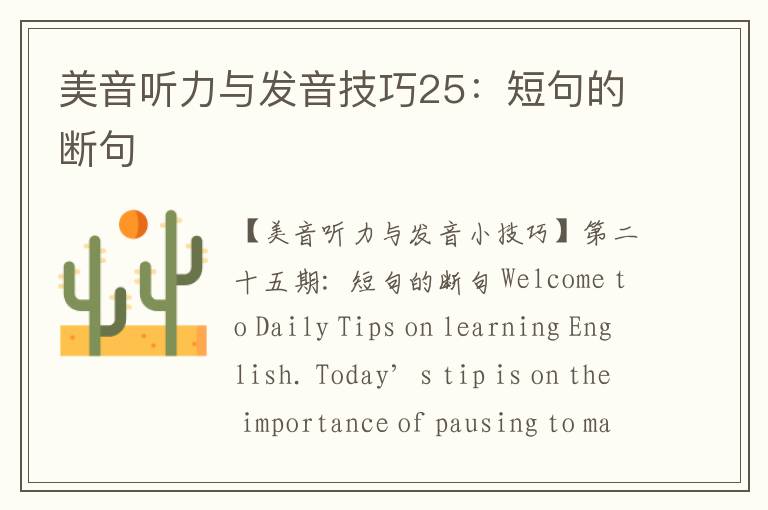
【美音听力与发音小技巧】第二十五期:短句的断句
Welcome to Daily Tips on learning English. Today’s tip is on the importance of pausing to mark the boundary between phrases or thought groups.
In a previous tip, I mentioned how in long sentences, it is necessary to pause between thought groups. However, relatively short sentences may also require pauses to help the listeners organize the stream of sounds correctly. Let’s look at some examples. In the question “what time do you come in in the morning?” It is necessary to pause between the two prepositions “in”. If you pause after the word “come”, “what time do you come / in in the morning?” Then the listeners will be confused, because “come in” and “in the morning” are two separate thought groups. Here’s another similar example. “Look your papers over over the weekend.” You need to pause between the two “over”s to help your listeners organize your words. If you pause somewhere else like “Look your papers / over over the weekend”, nobody will understand you. Sometimes pausing in the wrong place will change the meaning of what you say.
For example, let’s take two sentences. Sentence 1: “I usually eat sushi for lunch.” Sentence 2: “I ate noodles today.” When you put the two sentences together in speech, you must pause slightly between them. “I usually eat sushi for lunch. I ate noodles today.” If you pause after the word “sushi”, the meaning changes. “I usually eat sushi. For lunch I ate noodles today.” So remember to use pauses to group ideas together. If you pause in the middle of ideas, or group pieces of different ideas together, your listeners will have a hard time understanding you.
This has been today’s daily tip. Tune in tomorrow for another tip on learning English.
--由英语编辑